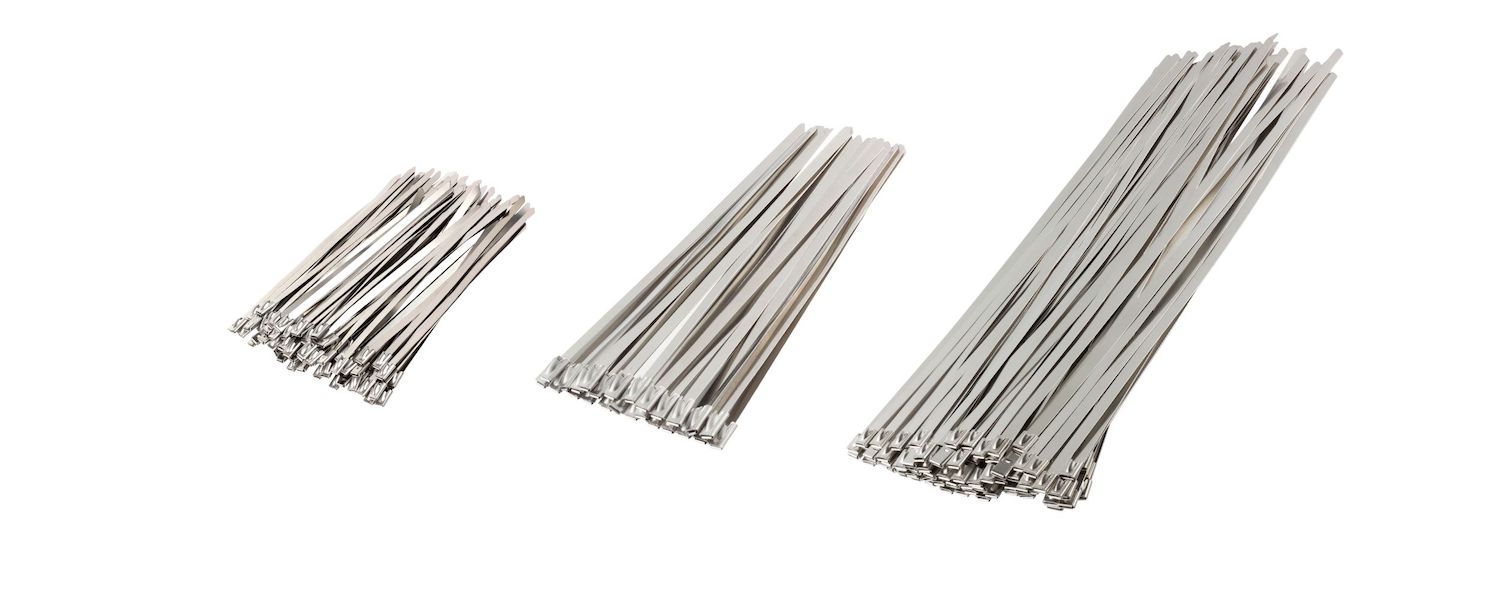There are three types of stainless steel cable ties; non-coated, PVC coated and epoxy coated stainless steel ties.
Stainless steel cable ties are designed to withstand the harshest and most extreme environments, including exposure to extreme heat, corrosion and weathering.
We’ll take a look at each type in more detail and consider the different properties and usages of each.
What are stainless steel cable ties made from?

GTSE’s range of stainless steel cable ties are made from flame retardant 316 stainless steel, which provides additional resistance to corrosion, chemicals and harsh environmental conditions.
These cable ties are built to withstand high operating temperatures up to +540°C, making them ideal for environments with extreme temperatures and severe environmental conditions.
They also offer added tensile strength, meaning they can withstand extra tension, providing greater durability up to a minimum of 160kg in weight when looped and secured.
Due to the added resistance, durability and strength, stainless steel cable ties are often suitable for indoor, outdoor and underground application, used across a range of industries from automotive, industrial, mining and chemical plants.
Stainless steel cable ties are also available with either a PVC or epoxy coating, which can provide enhanced strength and resistance, whilst reducing the chance of scratches.
Furthermore, it is advised not to use stainless steel cable ties in applications where they come into contact with galvanised steel, as the two may react to each other, with coated stainless steel cable ties providing the solution of choice in this environment.
How do you use stainless steel cable ties?
These ties have a self-locking mechanism, with an internal locking ball that rolls as the cable tie is tightened, designed to provide additional strength to protect against wear and tear.
To secure the tie, insert the tail into the locking mechanism. The ball bearing mechanism can be secured by either hand or by using a specialist tool.
This tool is ideal for situations where the tie cannot be installed easily by hand. These tools will fasten the tie with your chosen tightness and will automatically remove the excess material from the tail without leaving sharp edges.
Stainless steel cable ties are single-use solutions, and are not designed to be released and reused.
What sizes are stainless steel cable ties?
There are various lengths, widths, bundle diameters and tensile strengths available across the range of stainless steel ties, from 150mm in length to 1200mm in length, to 4.6mm to 7.9mm in width.
As a general rule, the greater the width of the tie, the higher the tensile strength.
For an overview of the different sizes and strengths take a look at our size and strength chart found here.
What are metal detectable cable ties?
Metal detectable cable ties are nylon cable ties with metal content spread evenly throughout to allow for detection by metal scanning equipment, whilst the unique metallic blue colour allows for quick and easy visual identification of the cable tie.
Even the smallest amount of metal in the content of the tie can be picked up by scanners, making these perfect for the food, pharmaceutical, medical, dental, chemical industries where hazardous waste needs to detected identified and separated.
Our range of metal detectable cable ties are available in sizes from 100mm x 2.5mm to 380mm x 4.8mm, manufactured from nylon self-extinguishing to V2 UL94, water absorbent up to 8% and suitable for operating temperatures up to +100°C.
These ties are suitable for the HACCP (Hazard Analysis Critical Control Point) process, used to identify where potential hazards could occur in the process of food production, or be used in the manufacturing process.


